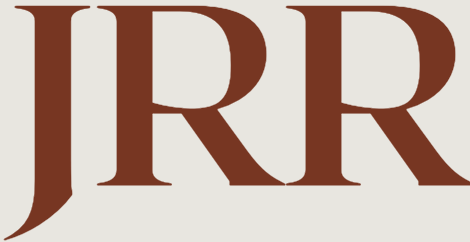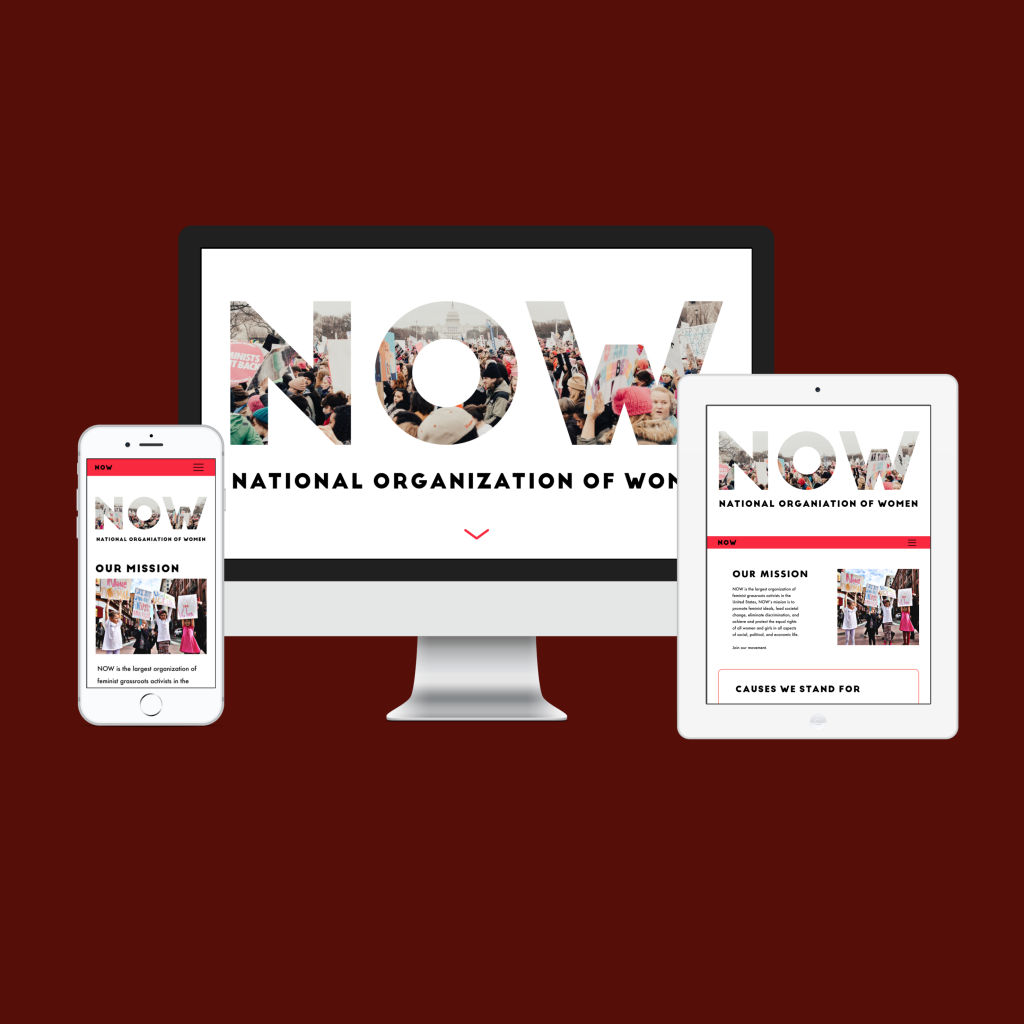About the project
Client
HyreCar
My role
User Research
Interaction Design
Testing
Team
Myself
1 Project Manager
1 Lead Architect
7 Fullstack devs
Timeline
6 months
2020
The Challenge
Scale our product to align with changing customer needs
Our goal for the project was to offer a way for large fleet owners to manage all aspects of their rental business while offering flexibility for our shifting variety of business types. The original premise was simple: rent your idle car in your garage for passive income. As HyreCar shifted, we learned that with more cars, comes more staff, more rentals, and more maintenance, and we were not providing a way for our customers to be successful at all of this. Our ambitions were to create a strong foundation that embraced a rapidly evolving business and more diverse user base.
Goals:
- Help our large fleet owners manage business operations and staff
- Make listing multiple cars to our platform fast and easy
- Create a foundation that sets us up to continually build
Measures of Success
Before jumping into designing a solution, it was important to define success and understand the health of the customer experience.
Prior to the redesign, daily active rental and lifetime value of an owner were the main proxies we had to measure the overall customer experience.
This meant that we also relied heavily on qualitative, attitudinal feedback from our customers.
Kickoff
Understanding our customer’s unique business models
On the outset of the project, we didn’t have a clear understanding of how our new segment of owners operated their rental businesses and without pre-existing insights, I partnered with our project manager to explore how our fleet owners’ goals aligned and/or differed from our existing peer-to-peer owners. We completed roughly 10 long format customer interviews, 5 stakeholder interviews, and sent out surveys to create several new personas and empathy maps.

Example of the new user personas for owners
Early Insights
Organization and Structure
Many owners had large scale enterprises, with multiple locations or individual operations funneling up to one singular business, but no two customers followed the same structure. Each had defined their own way of doing things.
Roles & Permissions
Large fleet owners often employed a small staff to manage their rental business and they were sharing their login information with many staff members. All operated out of one account, leading to confusion, distrust, and privacy conceerns.
Wasted time
Listing cars one by one was taking too much time and effort, which limited their ability to scale their rental fleet.
How might we offer the flexibility for customers of all sizes to easily scale their staff and fleets?
Key Feature #1
Creating a Rooftop
Organizations could have the flexibility to create multiple rooftops, or individually operated rental businesses that report up to one main business in a tree structure.

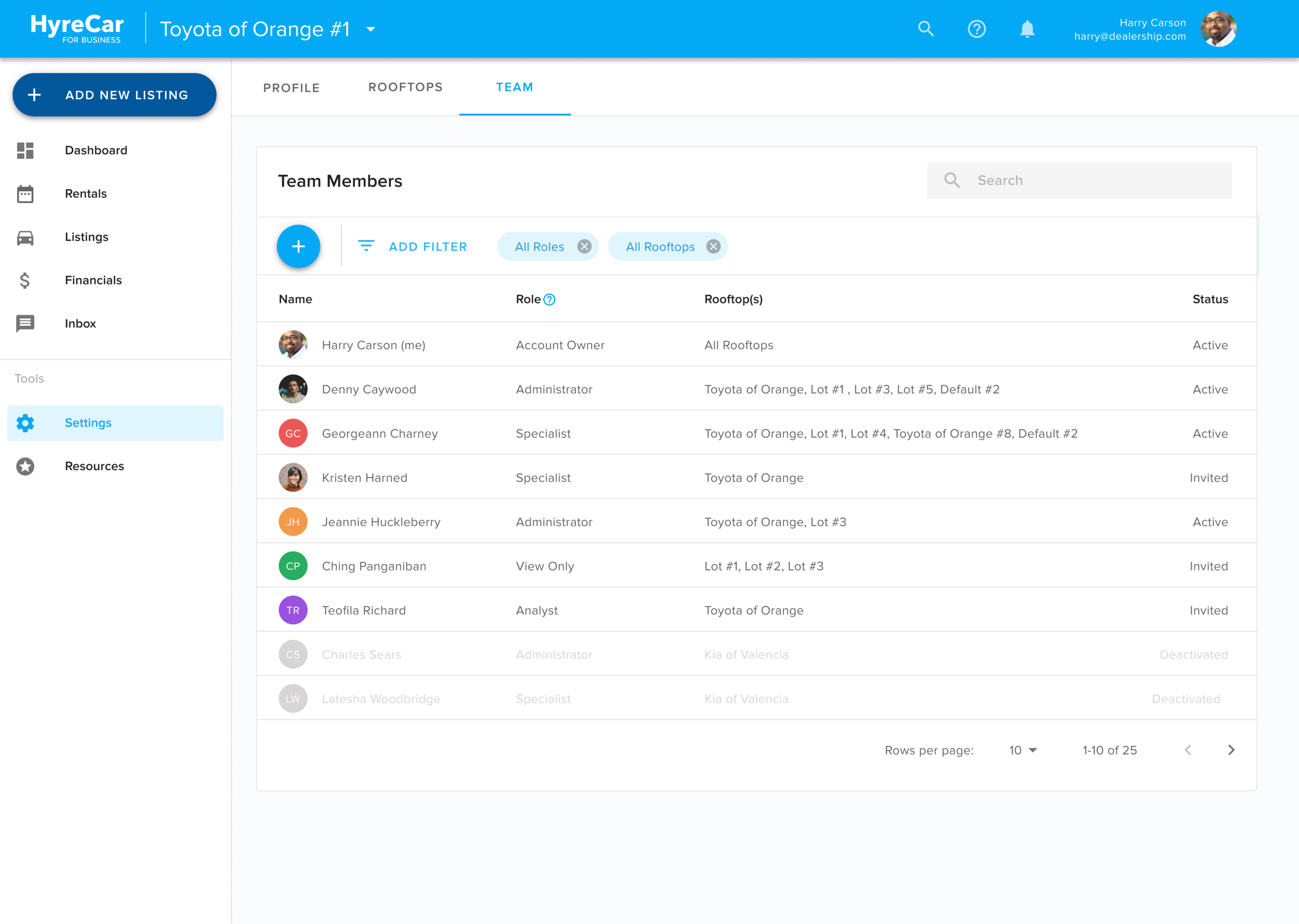
Key Feature #2
Adding team members
Three roles were created with a variety of permission levels, so that owners could administer different levels of access to their rental business: Owner, Administrator, and Agent.
Key Feature #3
CSV Import
Instead of listing cars one at a time to the marketplace, could import dozens of cars at once using a CSV template and a guided, step-by-step process.

How we got there
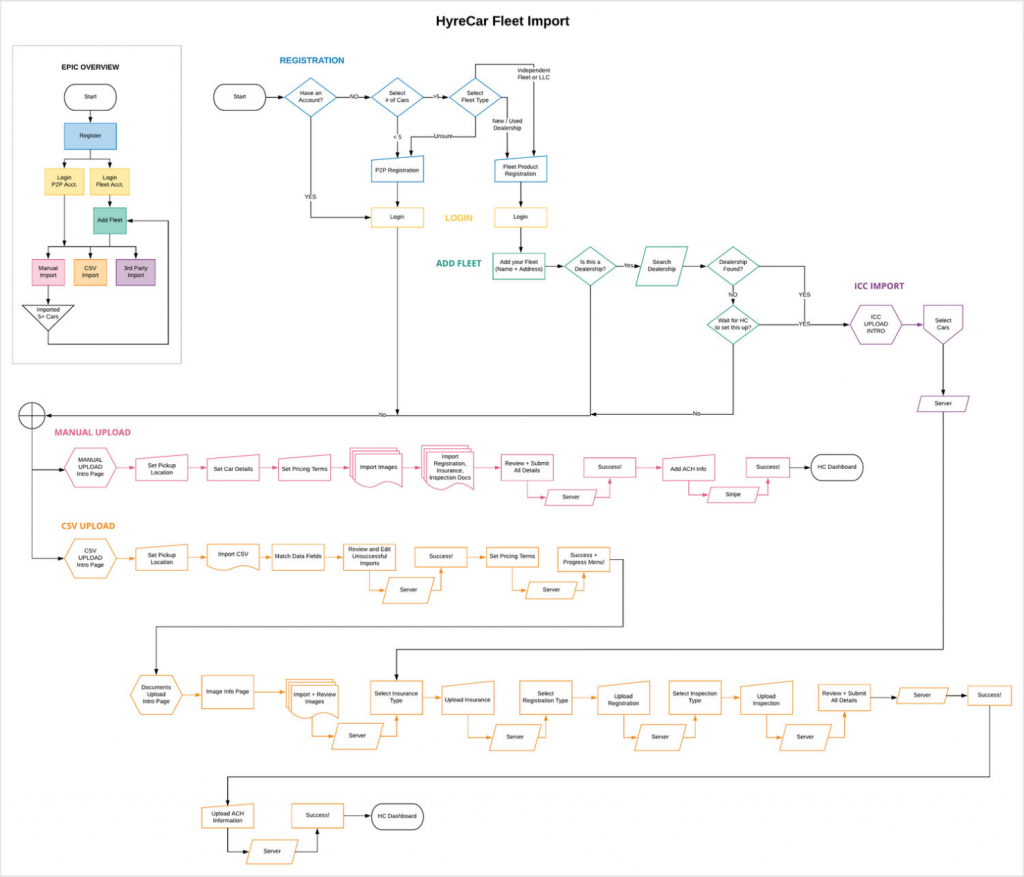
Site Map Redesign
Redesigning the Site map aided in communication between product and architecture
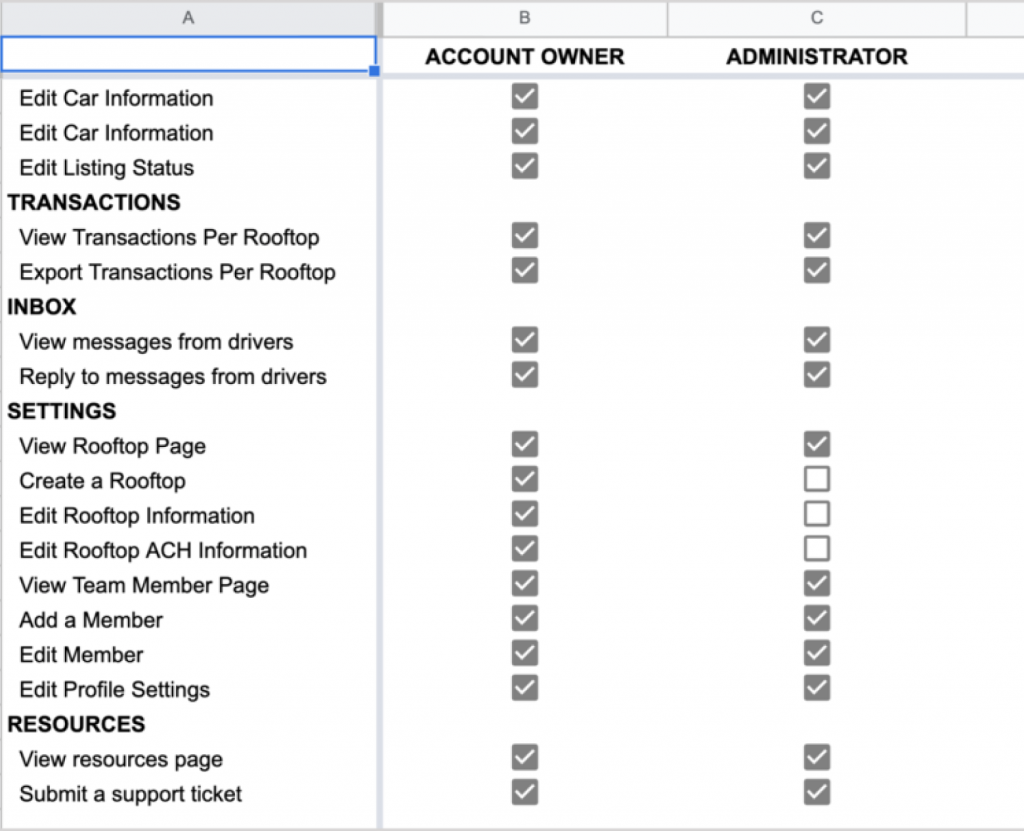
Process Diagrams
Process diagrams helped us to narrow down our project scope

Detailed Specs
Specifications documented permission levels for each account type. This document became our source of truth.

Testing and Iterations
Prototypes
The designs started as paper ideas and was originally called “HyreCar Fleet.” I tested out paper designs and low fidelity wireframes internally with our account owners who have the most interaction with our customers. This helped me to better determine the main navigation.
Once the ideas came together, I utilized our style guide to build out high fidelity prototypes, which I used to moderate several rounds of usability tests with actual customers. These tests were held remotely using Google Meet, where I asked our customers to complete several tasks: List a car using CSV Upload, Add a Team Member, and Create a Rooftop.
Test Results
The designs received positive feedback and validated our ideas, but helped me to determine that tool tips and links to educational help articles were small improvements that could have a high impact. Since HyreCar for Business included additional service, I determined through testing that our customers needed to have direct access to their account manager every step of the way.
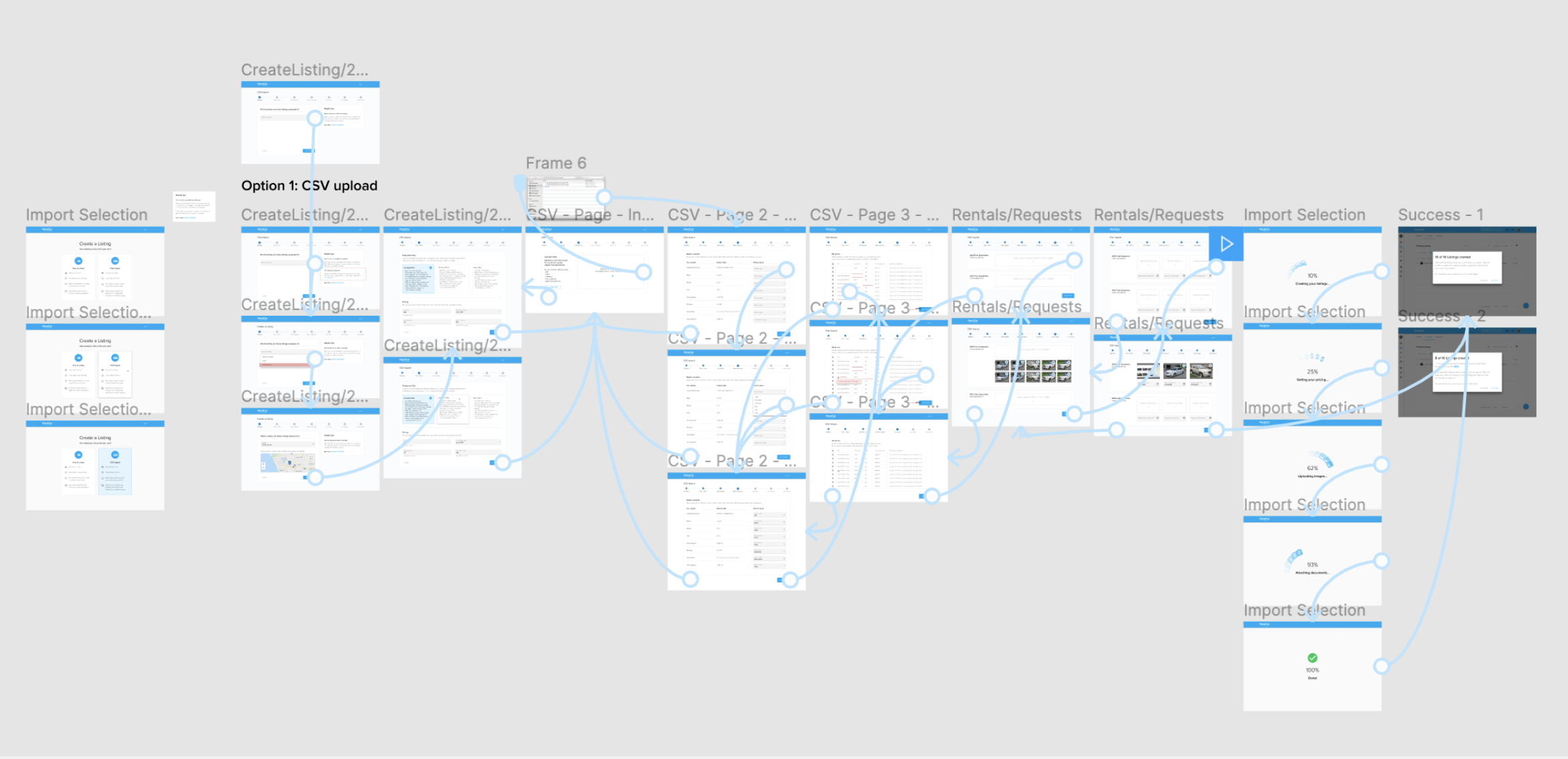
Screenshot of the prototype design in Figma for the CSV Upload flow.
Results + Next Steps*
1
%
Increase in Customer LTV
1
%
Increase in Daily Active Rentals
1
%
Decrease in Time to List 10 Cars
The introduction of HyreCar for Business had a positive impact on both the owner experience and the HyreCar business model as a whole. Within 9 months after launch, we saw some amazing results. In the end, the HyreCar for Business product and service enabled us to create an additional revenue stream. With this new baseline product, we plan to pursue additional features to better optimize our customers to continue to scale their business, including better transactional transparency and remote pickup.
